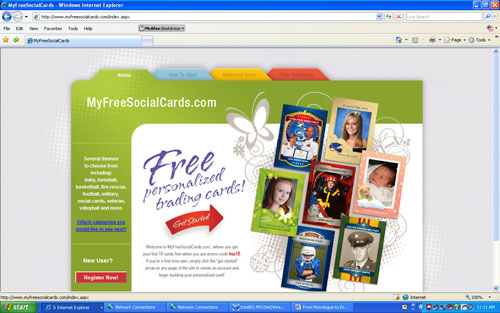Although the title of CMO barely existed fifteen years ago, it has now become one of the most precarious jobs in the C-Suite. The blend of a difficult economy, pressure to contribute to the bottom line, and dramatic changes in technology are forcing marketing executives to become more innovative than ever before. Marketing executives can’t push out static television and print campaigns and reach consumers who are increasingly demanding interaction with companies via the Web, e-mail, and mobile technologies. Marketers must add value and deliver superior customer service. They need to engage, listen, and respond to customers to bolster customer satisfaction and retention. This means making the move from a monologue to a dialogue with prospects as well as customers. In addition, print service providers/marketing service providers must be prepared to support them with the right technologies, tools, measurements, and metrics.
Technology Has Never Been More Interactive
In a short time, improvements in technology are changing the face of marketing. Businesses’ increasing adoption of interactive technologies (e.g., viral marketing, wikis, blogs, social networking, e-mail) have enabled consumers to interact with firms as never before. From a print service provider perspective, this means opportunity. In InfoTrends’ recently published study entitled Multi-Channel Marketing Measurement and Benchmarking, it became clear that several firms are capitalizing on this opportunity. InfoTrends surveyed 336 companies that were currently offering multi-channel services (i.e., direct mail, e-mail, personalized URLs, Web landing pages, and/or mobile messaging). Over 72% of these respondents had been offering multi-channel services for more than 12 months. The majority of service providers surveyed currently offer print (92%) and e-mail (83%) services. Web landing pages are gaining traction; over half (59%) of the service provider respondents are using the channel today and another 21% are planning to begin doing so within the next 24 months. While mobile messaging is still a small market for our service provider respondents (only 25% currently offer these services), another 29% are planning to offer mobile messaging within the next 24 months. These print/marketing service providers understand that the marketing communities they are serving want to engage in a dialogue with clients.
From Printed Package to Personalized Baseball Cards for Brand Reinforcement
Nestlé wanted to reinforce its Drumstick brand name during the 2008 baseball season. The company approached Atlanta-based Digital Printing and Imaging (DPI) for help. A baseball card offer appeared on every package of vanilla Drumsticks in the U.S. from April through December 2008. Using its digital color technology, DPI produced more than 3 million personalized youth-league baseball cards in an innovative sports-themed promotion with Nestlé Drumstick brand sundae cones. Through the program, consumers could visit a DPI-developed Web site, upload an image, enter a youth's team name and player statistics, view a PDF proof, and then order a pack of 16 cards. DPI and Nestle saw the benefits of a multi-channel approach for brand reinforcement—they used a printed offer on a package, an Internet site, and a baseball card to deliver lasting memories for the recipient.
This was DPI’s first major business-to-consumer offering. For the program, DPI programmed a template building interface that incorporated text layout and image cropping. The company also offered a toll-free line to assist consumers in creating cards, but (thanks to the site’s intuitive design and instructions) less than 1% of orders require telephone assistance.
Based on the knowledge gained with the baseball card application, DPI decided to explore additional opportunities to replicate this program for consumer-oriented applications. Three weeks ago, DPI launched www.freesocialcards.com.

According to CEO Bob Moore, “There is a big market for social cards across a number of vertical markets… sports teams, military, dance, firefighters. DPI has predesigned templates, so images can be uploaded and in a few minutes you can have your own personalized trading cards.”
DPI is now in the consumer marketing game. The company is quickly learning that a dialogue is critical for its business as it focuses on market reach. Bob stated, “We are engaging in Search Engine Optimization, leveraging ad space on Facebook, and providing the first 18 cards free. This is our form of viral marketing… you must have as many interactive channels as possible to reach the consumer.”
Marketing Going Mobile
With the increased focus on interactivity and multi-channel communications, marketers want to integrate online media with documents to enable a cohesive and unified marketing tool. At the same time, however, fully executing these multi-channel programs is often elusive. Technologies like text messaging, short message codes, and PURLs are seen as promising but lack a quick, precise, elegant encoding system to efficiently transport the recipient from paper to an online experience.
Marketers are beginning to explore QR (Quick Response) codes as the ultimate answer. A QR code is a high-density barcode readable by cell phones and simple PC cams. Recipients can quickly and easily interact with the QR-enabled documents they receive. They simply point their camera at the QR symbol and they are instantly connected to a QR-encoded Web page without ever having to remember or type in numbers and promotional codes—they just point and shoot.
The possibilities are starting to be realized in today’s markets. Tourists walking around San Francisco last spring found a new way to locate the best food in the city—small images that looked like bar codes adorned more than five hundred restaurants and businesses. When the codes were scanned with a digital camera-enabled smartphone, they provided instant access to restaurant reviews.
These codes are appearing in newspapers, in magazines, and on billboards. In the States, Polo Ralph Lauren pioneered the use of this technology in the fashion field. In conjunction with last year’s U.S. Open Tennis Tournament, Ralph Lauren kicked off an initiative that included billboards, banners, and print ads marked with QR codes—they were connected to an e-commerce site where consumers could shop directly from their phones, view the collections, and even connect to RL Magazine.

Imagine the possibilities for blending printed direct mail, signage, and QR codes to extend the interactive experience with consumers. Catalogers can send out printed catalogs with QR codes associated with each item, and filling up a shopping cart becomes as simple as pointing and clicking. To take advantage of a direct mail offer, the user points his/her cell phone at the offer embedded in the QR code. The offer links to the retailer’s Web site to complete the transaction or downloads a coupon that the recipient could take to a retail outlet.
People have their phones with them all the time, and they like using them. They want instant access and a way to obtain information while they are traveling. Many people would enjoy the ability to walk by a poster, take a photo of a code, and instantly receive a movie trailer. Still others would like to be able to pass a real estate sign, download all the information about a house, and take a virtual tour. The industry is poised to get there and consumers and marketers are ready to take advantage. QR codes are one more technology that can help transform a monologue into a dialogue.
What Does This Mean to Print/Marketing Service Providers?
Like it or not, online media and digital channels are taking center stage. Marketers are seeking partners with the right talent and competencies to help them become more creative and innovative in building a better dialogue with consumers. This means rough roads ahead for traditional mass media. If you want to participate in the lucrative marketing value chain, it’s time to evaluate the services that you’re providing for your customers—the most effective services will help your customers interact with their consumers and identify the skills essential to “getting into the game.” This means becoming the partner that initiates a dialogue, not a monologue.









